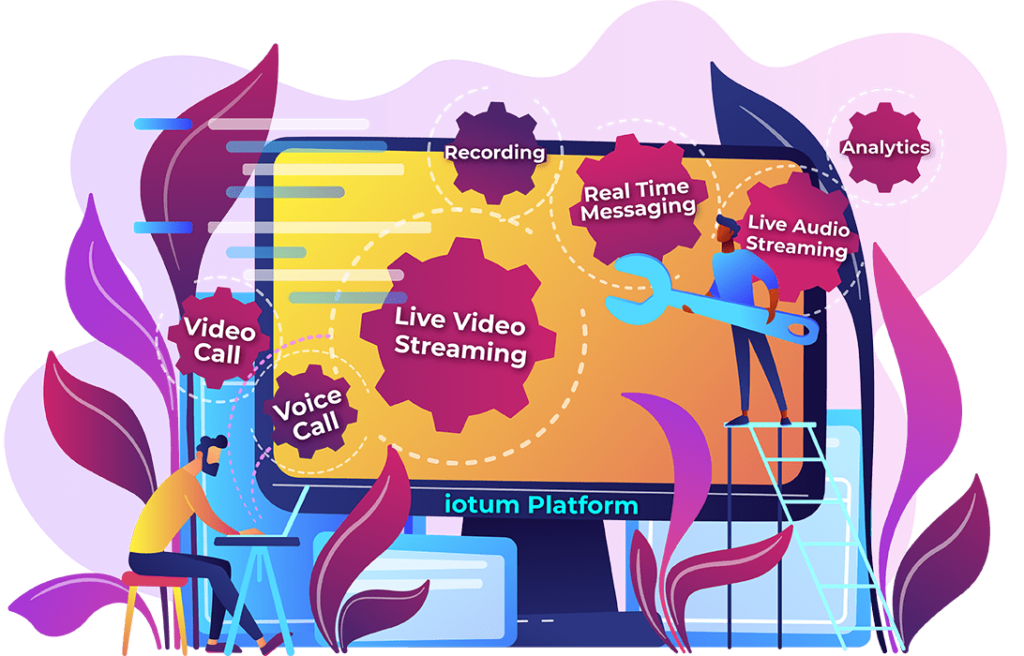5 Top Challenges Large Organizations May Face When Embedding Video Conferencing
Technical Compatibility:
Multiple departments within large corporations use various hardware, software, and gadgets. To prevent any technical problems, it’s crucial to make sure that when it comes to embedded video conferencing solutions, it is compatible with the organization’s current IT infrastructure and is flexible and easy to implement.
Bandwidth Constraints:

Significant bandwidth is needed for video conferencing. To avoid any lag or downtime, large enterprises must ensure that their network infrastructure can meet the bandwidth needs of video conferencing. Most of the time this is not an issue, but it is important to address. Also, different embedded solutions can require different bandwidth needs, so make sure you choose one that can suit the needs of your company and location.
Security Concerns:
In big enterprises, data security is of vital importance. To safeguard private data and stop illegal access to sensitive information, it’s crucial to make sure the video conferencing system has robust security measures in place. Do your research and ensure your provider has accreditation and meets regulatory standards that can help to safeguard your company and your client’s information. SOC2 and HIPAA compliance are just two of many compliance certificates that your organization may want to consider when choosing a HIPAA compliant video conferencing solution.
User Adoption:
It can be difficult to get staff members to use video conferencing efficiently. Even more so it can be difficult to get them to switch using what they are used to. To ensure that employees can utilize the technology properly and efficiently, organizations need to offer sufficient training, support, and assistance and share with the employees why they are choosing to use a certain technology over another.
Integration with other tools:
It can be difficult to integrate video conferencing into currently used workflows and tools. In order to prevent workflow interruptions, organizations need to follow the best practices for implementing video conferencing in the workspace and make sure that the conferencing solution works flawlessly with all of the tools and apps they employ and ensure that implementing it into existing solutions and workflows is easy and efficient with minimal to no developer work needed.
5 Best Practices Large Organizations Should Consider When Embedding Video Conferencing
Plan and test before implementation:
Organizations should thoroughly evaluate their network, security needs, and technological infrastructure before deploying embedded video conferencing. By doing this, businesses will be better able to see any possible technical compatibility problems and take the appropriate action to guarantee a successful rollout. They should review embedded video conference guide, talk with their existing developers and share API documents so they can evaluate the best possible fit. Different providers offer different implementations, styles, and support. So working with the provider that fits your organization is important.
Invest in high-quality hardware and software:

Organizations should invest in top-notch technology and software to provide the finest video conferencing experience possible. This covers high-quality speakers, microphones, and webcams. This does not meet to be expensive but it does need to ensure that whatever your video conference is about can be produced without a hitch.
Provide user training and support:
In order to ensure that staff members use video conferencing properly and efficiently, it is essential to provide them with the necessary training and assistance. To guarantee that employees can confidently utilize the technology, organizations should conduct frequent training sessions and offer user manuals and help desk support. Further to this, most solution providers may provide this training to your employees free of change.
Ensure network and security measures are in place:
Businesses should confirm that the bandwidth needs of video conferencing can be supported by their network infrastructure. In order to safeguard private data and stop illegal access to critical information, they also need to make sure that the video conferencing system is equipped with robust security features.
In conclusion, deploying integrated video conferencing in big businesses might have a lot of advantages, but it also has a number of challenges. Organizations may leverage the advantages of video conferencing and guarantee a successful adoption by adhering to the best practices described in this blog article. Embedded video conferencing may aid businesses in boosting productivity, collaboration, and communication with the correct strategy. Furthermore, they can generate high profits by integrating and embedding video conferencing into existing software services and selling it at a premium.
If you’re interested in learning more about embedded video conferring APIs and SDKs. Check out iotum.com or schedule a meeting with one of our experts.

